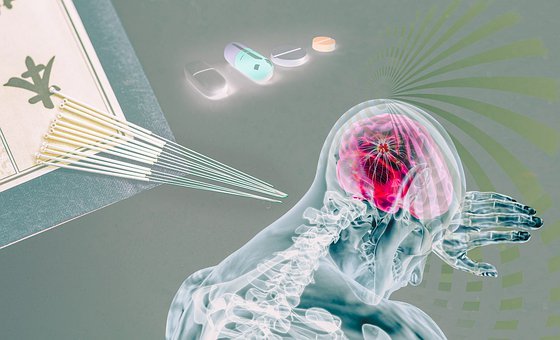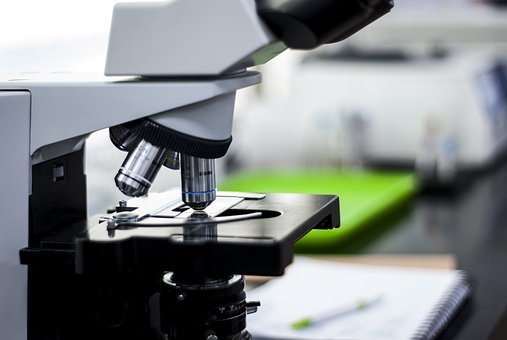What Is Asthenozoospermia?
Date:2020-09-28 click:0
According to statistics given by WHO, about 15% of couples of childbearing age in the world suffer from infertility, and about 50% of the cases are caused by male diseases. At present, about 40% - 75% of male infertility can not find the cause, which is called idiopathic male infertility, often manifested as oligospermia, asthenospermia, and other semen problems.
According to sperm motility, semen routine analysis can be divided into four levels: a, b, c and d. a refers to the sperm which swims fast forward, b refers to the sperm which swims slowly forward, c refers to the sperm that does not swim forward, and d refers to the sperm that moves very slow or even are immobile.

Asthenospermia means that after 3-7 days without sexual life, more than three consecutive semen routine examinations indicate that the rate of sperm moves forward(a + b) is less than 50%, or the rate of sperm that moves fast forward is less than 25% or the rate of sperm motility (the rate of alive sperm) after ejaculation is less than 50%.
Under normal circumstances, sperm need to rely on the action of various active substances secreted by the accessory gonad to further obtain energy to maintain its ability to move forward. If there are infectious diseases, immune diseases, functional diseases, and developmental diseases in organs such as epididymis and accessory gonads, it is enough to lead to the weakening of sperm'ssperm's ability to move forward or loss, and this condition can be called asthenospermia.
Common causes of asthenozoospermia
1. Bacterial infections
It'sIt's usually caused by frequent masturbation. The causative bacteria enter the urethral meatus and then spread to the reproductive system, such as epididymis, seminal vesicle, and prostate. The infections of these organs will cause variation in seminal plasm; thus, its Ph value, oxygen, nutrition and metabolism will be unsuitable for sperm to move and live.
2. Varicocele
It'sIt's commonly caused by long-term sitting. Males with this disease will lead to hypoxia of partial testicle, which is the result of venous blood backflow obstacles, and the increase of prostaglandin and 5-hydroxytryptamine in venous blood. Thus, the sperm motility will be reduced.
3. Deficiency of microelements
Microelements play a very important role in keeping the vitality of sperm, especially zinc. Males with low zinc intake will have the risk of asthenozoospermia.
4. Mycoplasma infection
Mycoplasma infection is a kind of STD. Once infected, the mycoplasma will stick to the sperm tail and affect sperm motility.
5. Obstacle of testicular spermatogenic function
It may be caused by an infection of mumps and accompanied with orchitis. If the testicular spermatogenic epithelium is incomplete, the quality and motility of sperm will be reduced.
6. Unhealthy lifestyles
Studies indicate that males who are drinking and smoking too much have an increased risk of asthenozoospermia. Because nicotine and alcohol can change the environment of semen, which results in low sperm motility.
7. Anti-sperm antibody
The cause of the anti-sperm antibody hasn't been found out completely. It can induce the self-defense of sperm, which will cause their own immune system to produce antibodies, and then sperm will be difficult to live.

Symptom
No.1
If you have been married for more than two years and did not take any contraceptive measures, but your wife still can not conceive naturally.
No.2
In general, patients with asthenospermia will have non-liquefied semen, low sperm motility. Besides, the secretion of prostate fluid will increase. Thus, the quantity of sperm is increased as well. As the semen is diluted, the number of sperm per milliliter semen will reduce. Therefore, the chance of conception is decreased.
No.3
Some patients with asthenospermia will have backache and weak knees, chills, and dull pain in the abdomen and perineum area. In addition, some patients may also have dizziness, tinnitus, insomnia, forgetfulness and dry mouth.
No.4
The semen of the patients with asthenospermia is usually thick and yellow; sometimes there is a burning sensation, swelling pain in the perineum or painful ejaculation, patients with the severe conditions may even have fear of sex and low libido.

Diagnosis
Step 1
Describe the condition in detail, marriage and childbirth, frequency of sex, the satisfaction of sexual life, ejaculation disorders and previous diagnosis and treatment.
Step 2
Careful physical examination, including the development of secondary signs (e.g., laryngeal node, beard, etc.), testis, epididymis, spermatic cord, etc.
Step 3
To finish the auxiliary examination, which mainly includes semen routine analysis, level of sex hormones, chromosome detection, etc.
Treatment
Because each person'sperson's condition is different, so the treatment method may be different. Patients should go to the hospital for examination and receive scientific treatment under the guidance of the doctor. The common treatment methods for asthenospermia are as follows:
1. Medication
A considerable part of the asthenospermia cases is caused by infection, so first of all, the anti-infection needs to be taken. Patients can be treated with medicine, and the specific medication is carried out according to the doctor's order. In addition to conventional drugs, asthenospermia caused by chronic prostatitis, epididymitis and orchitis can also take herbal medicine Diuretic and Anti-inflammatory Pill.
2. Surgical treatment
The severe asthenospermia caused by varicocele should be treated by operation.
3. IVF
For patients with mild or moderate condition who can not be improved with medication, artificial insemination can be used. IVF or ICSI technology can also be considered for patients with severe or severe asthenospermia and multiple failures of artificial insemination.
3. Other treatment
Patients need to correct bad habits, such as excessive smoking, drinking, sauna and so on, which will reduce or affect sperm motility. Therefore, for patients with asthenospermia, rest and relieve psychological pressure are also helpful for the treatment.
Prevention
Prevention of male infertility is as important as treatment. Men should pay attention to protecting their fertility, quit smoking, drink less, keep away from radiation and toxic chemicals, less sauna or hot sitz bath, and wear comfortable underwear made of cotton. Male fertility will decrease with the increase of age, and 25 to 35 years is the best age for births.
You may also be interested in:
Foods That Can Improve Asthenozoospermia
Asthenozoospermia Cured By Traditional Chinese Medicine
6 Top Causes of Asthenozoospermia You Should Know
You may also be interested in:
Foods That Can Improve Asthenozoospermia
Asthenozoospermia Cured By Traditional Chinese Medicine
6 Top Causes of Asthenozoospermia You Should Know



